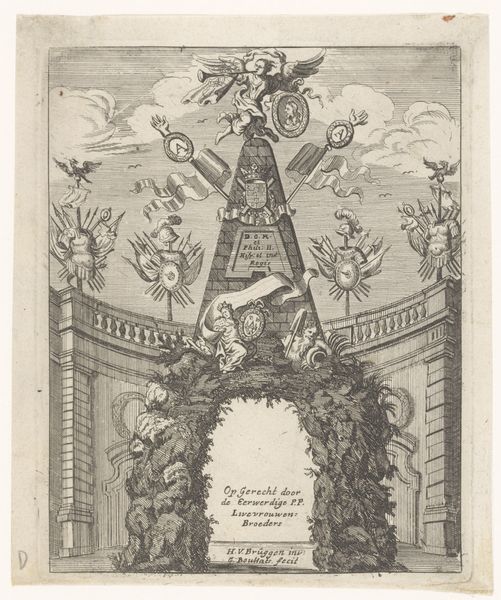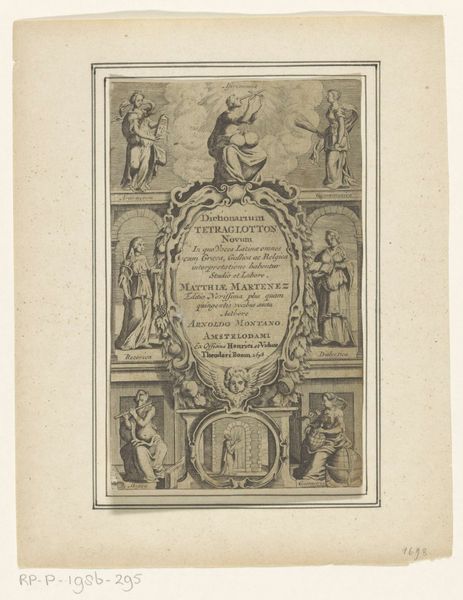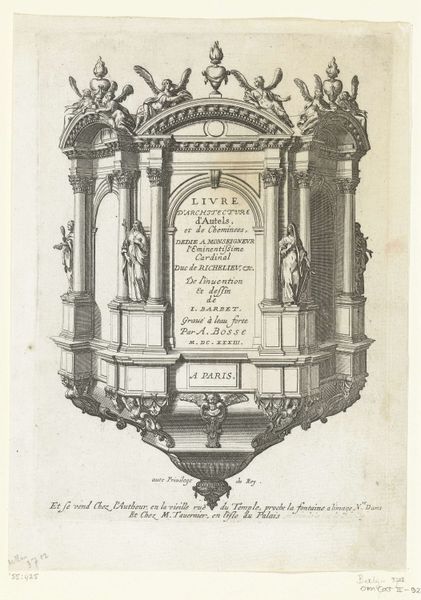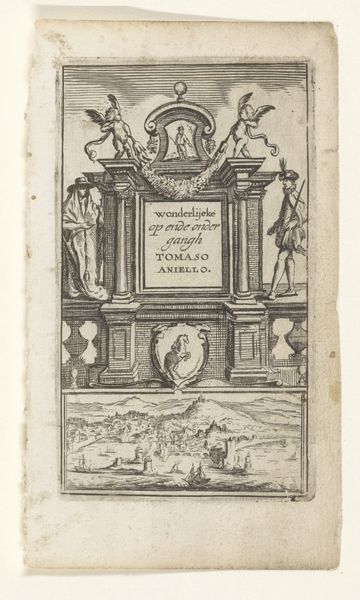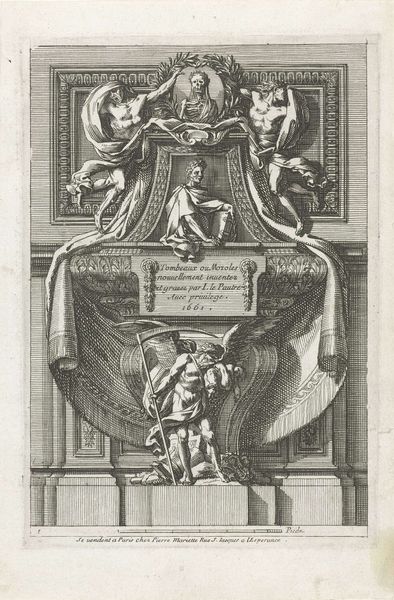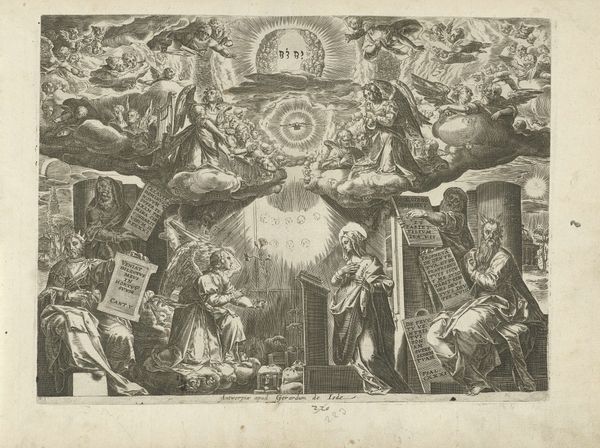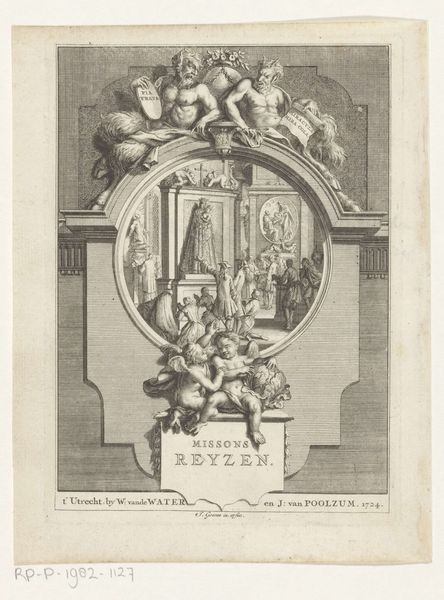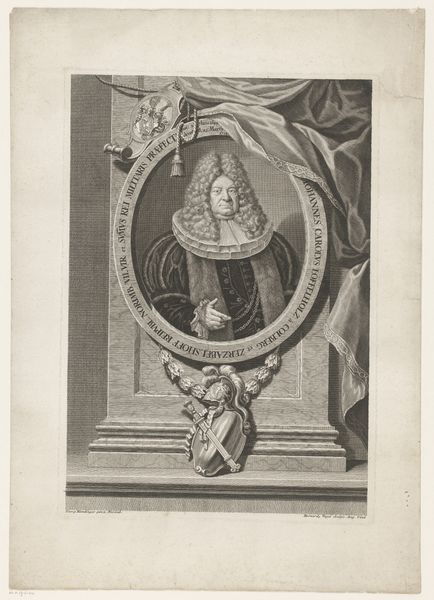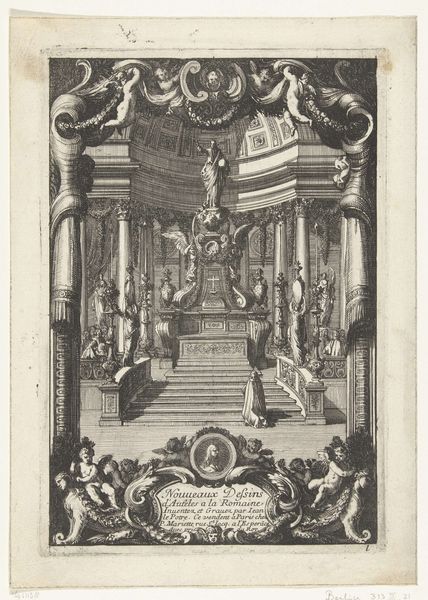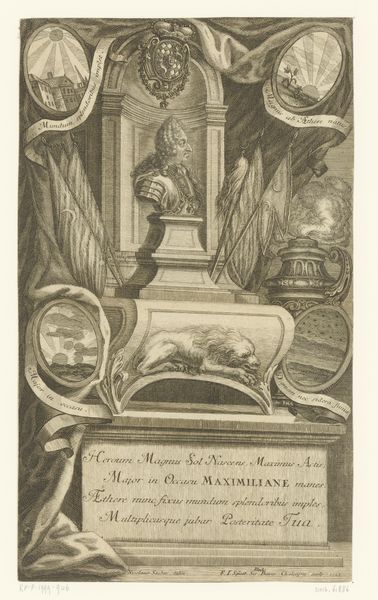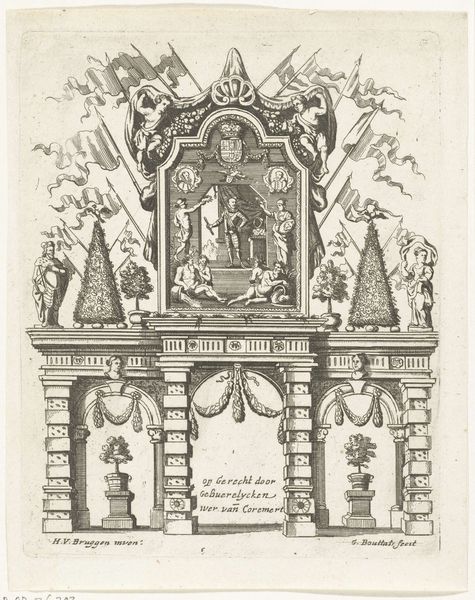
Openbaring van de ware aard van de Roomse kerk door de waarheid 1597 - 1601
0:00
0:00
hendrickhondiusi
Rijksmuseum
Dimensions: height 319 mm, width 211 mm
Copyright: Rijks Museum: Open Domain
Curator: This intriguing engraving is entitled "Openbaring van de ware aard van de Roomse kerk door de waarheid," or "Revelation of the True Nature of the Roman Church by Truth." Created between 1597 and 1601 by Hendrick Hondius I, it resides here at the Rijksmuseum. The medium is listed as an engraving printed with ink. Editor: It strikes me immediately as an attempt to use architectural space for symbolic purposes. The linear perspective and the details are rendered sharply in this medium and yet the composition feels incredibly crammed, almost claustrophobic. Curator: Absolutely. It's a fascinating example of Northern Renaissance symbolism, using perspective and architectural structure to reinforce a polemical statement. The period was marked by intense religious and political struggle, especially after the Dutch Revolt against Spanish rule. Editor: I see how those classical columns and archways, rendered so precisely with that crisp line work, frame not holiness but what the artist identifies as deception. Is it me or the face above the entrance appears somewhat sinister? Curator: That face looming overhead represents the corruption of the Roman Catholic Church, with the scene below depicting 'Dante Christ,' seated like a false idol receiving worship. This engraving criticizes the Church's authority during a turbulent period. It visually argues for reformed doctrines against perceived Catholic idolatry. Notice, too, the contrasting inscriptions framing the scene, directing the viewer toward a specific interpretation. Editor: The strategic arrangement of elements undeniably steers the observer. What stands out most is the rigid control. It seems that Hendrick Hondius I is trying to capture the intensity of these historical transformations, though the figures within the space look quite static. It really shows us how printmaking could serve as propaganda. Curator: Indeed. Consider the function of prints during this era; mass communication. These engravings played a crucial role in shaping public opinion during a period defined by its socio-religious changes. It highlights the importance of understanding the socio-political context within the work. Editor: I will leave it with an observation about the material then: that dark ink applied to the graphic art lends the work that imposing mood that seems appropriate to these harsh messages. It emphasizes an essential formal choice that affects the reading of the piece.
Comments
No comments
Be the first to comment and join the conversation on the ultimate creative platform.
